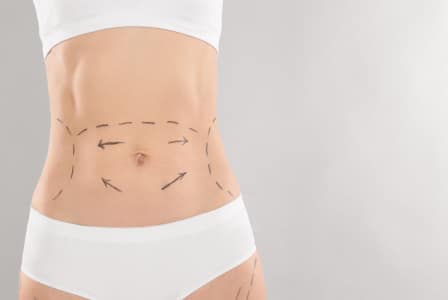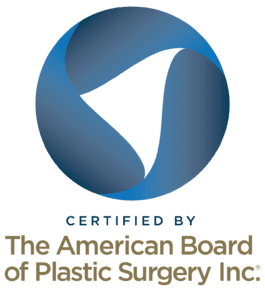No part of the body frustrates more of us than the abdomen. As we experience weight gain and then significant weight loss after, aging, pregnancy, and childbirth, extra fat and skin may accumulate on the stomach. But diet and exercise can only do so much.
But a Houston tummy tuck, also known as abdominoplasty, is a popular and effective surgical procedure that can trim the waistline and smooth the tummy. A tummy tuck also can strengthen and tighten the abdominal muscles, which may have been affected by pregnancy and childbirth.
Before having a tummy tuck, it’s important to understand the risks and benefits of the procedure. A tummy tuck can have impressive results, but the recovery from cosmetic surgery is extensive and there are risks of complications.
Below is important information about tummy tuck procedures, safety and other important information.
TUMMY TUCK SAFETY
If you choose a skilled plastic surgeon, having a tummy tuck is a very safe procedure. However, all surgeries have risks, and a tummy tuck is an invasive procedure. The risks with a tummy tuck are higher than with other cosmetic procedures.
The most common risks with a tummy tuck are infection. The procedure involves a long incision, and it’s possible for it to get infected. This is why it’s so important to follow your surgeon’s post-op instructions.
You should keep the incision clean and dry, and follow your surgeon’s directions about when you can bathe.
The chances of additional complications increase if you have heart, lung, or liver disease, or have diabetes, or poor circulation.
The most common complications are:
- Excessive scarring
- Bleeding
- Seroma, which may require an additional procedure to reduce
- Poor wound healing
- Blood clots
- Numbness
- Deep vein thrombosis
Of the more serious risks, DVT is the most common. The major risk is a blood clot can break loose from the legs and get to the lungs or heart. Talk to your plastic surgeon about the above risks and how you can minimize them.
Further, you can expect about four to six weeks of mild pain, swelling, and bruising. But if you notice these symptoms after six weeks, you could have delayed healing. Irregular healing can lead to excess skin loss, so be sure to talk to your surgeon right away.
You can reduce your risks with these tips:
- If you smoke, you should stop before surgery. Not smoking also will help you heal faster.
- If you have diabetes, make sure it is well controlled before surgery.
- Talk to your surgeon about all medications you take, especially anything that thins the blood.
IMPORTANT TIPS AFTER A TUMMY TUCK Procedure
1. Extensive Downtime Is Required
The tummy tuck is one of the most extensive plastic surgery procedures, and you’ll need weeks to recover. The procedure involves making an incision from hip to hip, and excess skin and fat are removed, with the remaining excess skin and fat being tightened.
Patients should expect to rest and miss work for at least two or three weeks. During the first week or two, you will be tired, sore, and swollen. It’s also normal to have moderate pain during this period, but this will improve.
It’s essential to give your body several weeks of rest so you can recover. Also remember that tummy tuck patients need help with small children and household tasks, such as grocery shopping and cleaning. Strenuous activities will prolong the recovery process.
2. You Need To Be At A Stable Weight
A tummy tuck is an effective way to shape and tone the lower body. But this procedure isn’t a substitute for losing weight. You should be near your ideal weight loss amount for at least six months before having a tummy tuck.
Most plastic surgeons want their patients to be within 10 or 15 pounds of their goal weight before having a tummy tuck surgery. This matters because a major change in weight can affect your tummy tuck results.
Fluctuations in weight also can stretch your abdominal tissues and you may even need a revision procedure later.
Your surgeon may use liposuction during your tummy tuck to eliminate extra abdominal excess fat.
3. You’ll Have Scarring
The tummy tuck is one of the most effective ways to tone abdominal area of the body, but you will have a long scar on the lower abdomen below the belly button.
The scar will fade after a year, but it will still be visible. Luckily, a skilled plastic surgeon can place the incision below the bikini and underwear line.
4. You’ll Have Surgical Drains
After your procedure, the surgeon will put in drains to reduce the buildup of fluid and blood. This will reduce swelling and speed your healing process.
The drains are temporary, but you will need to care for them by keeping them clean and following your surgeon’s directions about bathing and showering.
Your surgeon will probably remove the drains after seven to 10 days.
5. Healing Can Take A Year
You will not see your final results from the tummy tuck surgery for several months. Expect considerable swelling and pain for several weeks.
But after about six weeks, you should begin to see your results. Note that you may experience temporary numbness or a loss of sensation along your incision line. This is normal and will resolve over several months.
It can take as long as a year before your tummy tuck scar or abdomen fully heals, but most patients say the results are worth it. Some patients have their tummy tuck as part of a mommy makeover for even more impressive results.
Questions and Answers
 Is a tummy tuck surgery high risk?
Is a tummy tuck surgery high risk?
Similar to any other significant surgical procedure, a tummy tuck carries the potential for risks such as bleeding, infection, and unfavorable reactions to anesthesia.
Who should not get a tummy tuck?
Classified as obese or overweight, indicated by a Body Mass Index (BMI) exceeding 30. History of prior clotting problems or surgical difficulties. Presently using any medications, blood thinners, or supplements that could potentially create interference.
Are tummy tucks worth it?
In brief, the answer is affirmative – this treatment holds significant value. Many patients begin witnessing remarkable outcomes within approximately three months, and as the six-month mark approaches post-treatment, they are astounded by the transformative changes in their physiques.
In some instances, the abdominal area continues to show improvement and refinement for up to a year.
What is the difference between a tummy tuck and mini tummy tuck?
A mini tummy tuck entails a significantly smaller incision along the bikini line, typically measuring up to around 20cm in length. While this procedure effectively enhances the tautness and smoothness of the skin beneath the navel, the reduced incision size limits my ability to rectify lax skin or separated muscles in the upper or central abdominal regions.
REQUEST A HOUSTON TUMMY TUCK CONSULTATION
Interested in a tummy tuck? Please set up a consultation with Dr. Ashley Steinberg today. She’ll talk to you about the full tummy tuck procedure and help you decide if it’s a good choice for you. Patient come from all over Houston from cities like The Woodlands, Galveston, Sugarland and Pearland.
References
- 5 Things To Consider Before Getting A Tummy Tuck. (2019). Accessed at https://www.plasticsurgery.org/news/blog/five-things-to-consider-before-getting-a-tummy-tuck
- About A Tummy Tuck. (n.d.). Accessed at https://my.clevelandclinic.org/health/treatments/11017-abdominoplasty-tummy-tuck
- Tummy Tuck Overview. (n.d.). Accessed at https://www.medicinenet.com/is_abdominoplasty_safe/article.htm




 Is a tummy tuck surgery high risk?
Is a tummy tuck surgery high risk?








